Pioneer DEH-P8850MP Handleiding
Bekijk gratis de handleiding van Pioneer DEH-P8850MP (5 pagina’s), behorend tot de categorie Receiver. Deze gids werd als nuttig beoordeeld door 46 mensen en kreeg gemiddeld 4.5 sterren uit 23.5 reviews. Heb je een vraag over Pioneer DEH-P8850MP of wil je andere gebruikers van dit product iets vragen? Stel een vraag
Pagina 1/5

Note:
• Before making a final installation of the unit,
temporarily connect the wiring to confirm that the
connections are correct and the system works
properly.
• Use only the parts included with the unit to ensure
proper installation. The use of unauthorized parts
can cause malfunctions.
• Consult with your nearest dealer if installation
requires the drilling of holes or other modifica-
tions of the vehicle.
• Install the unit where it does not get in the driver’s
way and cannot injure the passenger if there is a
sudden stop, like an emergency stop.
• The semiconductor laser will be damaged if it
overheats, so don’t install the unit anywhere hot
— for instance, near a heater outlet.
• If installation angle exceeds 60° from horizontal,
the unit might not give its optimum performance.
(Fig. 1)
• When installing, to ensure proper heat dispersal
when using this unit, make sure you leave ample
space behind the rear panel and wrap any loose
cables so they are not blocking the ventsÆ
DIN Front/Rear-mount
This unit can be properly installed either from
“Front” (conventional DIN Front-mount) or
“Rear” (DIN Rear-mount installation, utilizing
threaded screw holes at the sides of unit chassis).
For details, refer to the following illustrated
installation methods.
DIN Front-mount
Installation with the rubber bush (Fig. 2)
1. Dashboard
2. Holder
After inserting the holder into the dashboard, then
select the appropriate tabs according to the
thickness of the dashboard material and bend
them.
(Install as firmly as possible using the top and
bottom tabs. To secure, bend the tabs 90 degrees.)
3. Rubber bush
4. Screw
Removing the unit (Fig. 3) (Fig. 4)
5. Frame
To remove the frame, extend top and bottom of
the frame outwards in order to unlock it. (When
reattaching the frame, point the side with a groove
downwards and attach it.)
• It becomes easy to remove the frame if the
front panel is releasedÆ
6. Insert the supplied extraction keys into the unit, as
shown in the figure, until they click into place.
Keeping the keys pressed against the sides of the
unit, pull the unit out.
DIN Rear-mount
Installation using the screw holes on
the side of the unit (Fig. 5) (Fig. 6) (Fig. 7)
1. Remove the frame.
7. Frame
To remove the frame, extend top and bottom of
the frame outwards in order to unlock it. (When
reattaching the frame, point the side with a groove
downwards and attach it.)
• It becomes easy to remove the frame if the
front panel is released.
2. Fastening the unit to the factory
radio mounting bracket.
8. Select a position where the screw holes of the
bracket and the screw holes of the head unit
become aligned (are fitted), and tighten the
screws at 2 places on each side. Use either truss
screws (5 × 8 mm) or flush surface screws
(5 × 9 mm), depending on the shape of the screw
holes in the bracket.
9. Screw
10. Factory radio mounting bracket
11. Dashboard or Console
Installation <ENGLISH>
Fig. 5
µ qJA«
Fig. 7
∑ qJA«
Fig. 6
∂ qJA«
7
8
9
11
10
5
7
6
Fig. 1
± qJA«
Fig. 3
≥ qJA«
Fig. 2
≤ qJA«
Fig. 4
¥ qJA«
5
6
60°
182
53
12
3
4
1
3
4
2
INSTALLATION MANUAL
INSTALLATION MANUAL
DEH-P8850MP
Printed in Thailand
<CRD4091-A/N> ES <KMMNX> <06A00000>
u« l “UN'« «c¼ r−M¹Æ…b¹b'« „öÝô« Ê«
This product conforms to new cord colors.
Los colores de los cables de este producto se
conforman con un nuevo código de colores.
As cores dos fios deste produto seguem um novo
padrão de cores.

VOd²«
æ
æWOÐdF«º
∫WEŠö∫WEŠö∫WEŠö∫WEŠö∫WEŠö
•dð q³—uBÐ “UN'« VO„öÝô« qË ¨WOzUN½ … R qJAЄöÝô« qOuð W× s bQ²K X Ë—uBÐ ÂUEM« qLŽÆW×O× …
•u*« lDI« qLF²Ý≈ułbU²K jI “UN'« l …œ d²« sdOž lD ‰ULF²Ý≈ VÝUM*« VO dÆôUDŽ√ V³¹ Ê√ sJ1 WBš
•d√ dA²Ý«Ë »d²« VKDð «–≈ p qOqLŽ VO uIŁdš√ ö¹bFð Ë√ »dO« w ÈÆ…
•—d²F¹ ô YOŠ “UN'« VdŠ ÷ô Ë ozU« W u¹ Ê√ sJ1d« Í–u Ë WUŠ w »U· u« q¦Æ¡vłUHuuD« bMŽ ·—«Æ¡È
•dFð «–« —eOK« qu t³ý qDF²OÝ—ô ÷ŸUHð —œdŠ Wł—«dð ô «c ¨tðÊUJ Í√ w “UN'« V dIUÐ ¨ö¦ fl sšUÝÃdš Uײ s » ÆW¾b²«
•“ËU& «–≈“ Ë«d²« W¹ô bI o_« s ∂∞ VO R¹©± qJA«® Æq¦_« tKLŽ “UN'« Íœ
•d²« bMŽË sLCð wJ ¨VOułdŠ XO²A𠜗«Ídð s bQ𠨓UN'« «c¼ «b²Ý« bMŽ VÝUM„ duK« nKš wU ⁄«Ë WOUô« WŠö³J« n d*«uN²« Uײ bð ô v²Š WOšÆW¹
ÂUEM«DINwHK)«ØwU_« XO³¦²K
dð sJ1u« Ác¼ VOs U≈ VÝUM qJAÐ …bŠ ÂUEM«® ¢ÂU_«¢DINXO³¦²K ÈbOKI²«
ÂUEM«® ¢nK)«¢ Ë√ ©wU_«DINd² VO uI¦Ð …œUH²ÝùUÐ ¨wHK)« XO³¦²«d³« »wž« *«
Ò
u*« XMMułuł vKŽ …œu« qJO¼ V½«Æ©…bŠ —≈ ¨qOUH²Kd²« ‚dÞ v« lłu*« VOW×{ ÆwK¹ ULO
ÂUEM«DINwU_« XO³¦²K
UD*« W½UD³« l VOd²«©≤ qJA«® WOÞ
1≠ueNł√ WŠ”UOI« …
2≠WJÝU*«
ÐFb ≈œšU‰ «*UÝJW w uŠW √łNe… «IOU”Æ Łr ≈š²d «FdË« «*MUݳW ŠV ÝLUW Uœ… uŠW √łNe… «IOU” Ë ≈ŁMNUÆ ®r ÐU²dOV ÐUŠJU ÐIb— «ôJUÊ ÐUݲFLU‰ «FdË« «FKu¹W Ë«HKOWÆ K²P5¨ r ЦMw «FdË« ∞π œ—łWÆ©
3≠WOÞUD W½UDÐ
4≠dÐwž
©¥ qJA«® ©≥ qJA«® “UN'« Ÿe½
5≠—UÞ≈
e'« œb ¨—UÞô« ŸeMuKF« ¡Ë Ís wKH«
…œUŽ≈ bMŽ® ÆtײHð v²Š ×U)« v« —UÞô«
Ë ¨—UÞô« qOuðł
Ó
Ë qHÝ_ oA« V½Uł tr ©ÆtKOu²Ð
•—dŠ «–« —UÞô« Ÿe½ qN« s `³B¹ uK«ÆWOUô« WŠ
6≠d²Ýô« `OðUH qšœ√d*« ëu« w WI¨…bŠ u*Ud¹ v²Š ¨qJA« w `{uÝrN½UJ w « u —ËbBÐ ÂUJŠUÐjGCÐ ÿUH²Šô« l WIÞ
u« w³½Uł qÐUI `OðUH*«u« V×Ý≈ ¨…bŠ…bŠ Æ×UK
ÂUEM«DINwHK)« XO³¦²K
vKŽ …œułu*« wž«d³« »uIŁ ‰ULF²ÝUÐ VOd²«
©∑ qJA«® ©∂ qJA«® ©µ qJA«® …bŠu« w³½Uł
≠±≠±
≠±≠±
≠±—UÞù« Ÿe½≈—UÞù« Ÿe½≈
—UÞù« Ÿe½≈—UÞù« Ÿe½≈
—UÞù« Ÿe½≈
7≠—UÞ≈
e'« œb ¨—UÞô« ŸeMuKF« ¡Ë Ís wKH«
…œUŽ≈ bMŽ® ÆtײHð v²Š ×U)« v« —UÞô«
Ë ¨—UÞô« qOuðł
Ó
Ë qHÝ_ oA« V½Uł tr ©ÆtKOu²Ð
•—dŠ «–« —UÞô« Ÿe½ qN« s `³B¹ uK«ÆWOUô« WŠ
≠≤≠≤
≠≤≠≤≠≤
ËË
ËËË
ÓÓÓÓÓ
ŁŁ
ŁŁŁ
ÚÚÚÚÚ
lMB*« WHO² v≈ …bŠu« olMB*« WHO² v≈ …bŠu« o
lMB*« WHO² v≈ …bŠu« olMB*« WHO² v≈ …bŠu« olMB*« WHO² v≈ …bŠu« o
Æu¹œ«d« XO³¦² WOK_«Æu¹œ«d« XO³¦² WOK_«
Æu¹œ«d« XO³¦² WOK_«Æu¹œ«d« XO³¦² WOK_«
Æu¹œ«d« XO³¦² WOK_«
8≠≈š²d u{F
Î
U ð
Ô
B³` Ot ŁIu» Ðd«žw «J²OHW Ë ŁIu» Ðd«žw «uŠb… «dzOOW ²d«HW ®ðB³` ²DUÐIW©¨ Ë«ŠJr —Ðj «³d«žw ŽMb «*u{F5 ŽKv q łU½VÆ ≈ݲb ≈U Ðd«žw ðIOOb ®µ ™ ∏ 3© √Ë Ðd«žw KU¡ «D` ®µ™π 3©¨ Ë ¹F²Lb –p ŽKv ýJq ŁIu» «³d«žw «*ułuœ… w «J²OHW Æ
9≠dÐwž
10≠d« XO³¦² ZOK_« lMB*« WHO²u¹œ«
11≠ueNł√ WŠe)« Ë√ ”UOI« …W½«
Instalação <PORTUGUÊS (B)>
Nota:
• çãAntes de realizar a instala o final do aparelho,
conecte os fios temporariamente para confirmar
que as conexões estejam corretas e que o sistema
funcione apropriadamente.
• ç íUtilize somente as pe as inclu das com o aparelho
para garantir uma instalação correta. O uso de
peças não autorizadas pode causar defeitos.
•Consulte o seu revendedor mais pr ximo se foró
necessário fazer perfurações ou outras
modificações no ve culo para a instalaí ção.
• ãInstale o aparelho de modo que n o fique no
caminho do motorista nem onde possa causar
danos aos passageiros no caso de uma parada
repentina, como numa freada de emergência.
• áO laser de semicondutor ser avariado se for
sobreaquecido. Portanto, n o instale o aparelhoã
num lugar que fique muito quente como por
exemplo, perto da saída do aquecedor.
• â çã °Se o ngulo de instala o exceder de 60 desde a
horizontal, o aparelho pode n o atingir suaã
performance ótima (Fig. 1).
•Quando instalar, para assegurar a dispersão
apropriada do calor ao utilizar o aparelho,
certifique-se de deixar um amplo espa o atr s doç á
painel traseiro e de enrolar quaisquer cabos soltos
de modo que n o bloqueiem as aberturas deã
ventilaçãoÆ
Montagem dianteira/traseira DIN
Este aparelho pode ser instalado apropriadamente
na “Dianteira” (montagem convencional dianteira
DIN) ou na “Traseira” (montagem traseira DIN,
utilizando os orif cios de parafusos roscados nosí
lados do chassi do aparelho). Para maiores
detalhes, refira-se aos seguintes m todos deé
instalação ilustrados.
Montagem dianteira DIN
Instalação com uma bucha de
borracha (Fig. 2)
1. Painel de instrumentos
2. Sujeitador
Depois de inserir o sujeitador no painel de
instrumentos, escolha as ling etas apropriadas deü
acordo com a espessura do material do painel de
instrumento, e dobre-as.
(Instale o mais firme poss vel usando as lingí üetas
superior e inferior. Para fixar, dobre as lingüetas
90 graus.)
3. Bucha de borracha
4. Parafuso
Remoção do aparelho (Fig. 3) (Fig. 4)
5. Armação
Para retirar a armação, estenda as partes superior
e inferior da armação para fora para soltá-la.
(Quando recolocar a arma o, aponte o lado comçã
a ranhura para baixo e fixe-a.)
• çãSolte o painel frontal para facilitar a remo o
da armaçãoÆ
6. Insira as chaves de extração fornecidas no
aparelho, como mostrado na figura, até que elas se
encaixem em posi o. Enquanto mant m asçã é
chaves pressionadas contra os lados do aparelho,
puxe o aparelho para fora.
Montagem traseira DIN
Instalação utilizando os orifícios de
parafuso no lado do aparelho
(Fig. 5) (Fig. 6) (Fig. 7)
1. Retire a armação.
7. Armação
Para retirar a armação, estenda as partes superior
e inferior da armação para fora para soltá-la.
(Quando recolocar a arma o, aponte o lado comçã
a ranhura para baixo e fixe-a.)
• çãSolte o painel frontal para facilitar a remo o
da armaçãoÆ
2. Fixação do aparelho no suporte de
montagem de rádio da fábrica.
8. Escolha a posi o onde os orif cios de parafusosçã í
do suporte e os orif cios dos parafusos doí
componente principal fiquem alinhados
(ajustados), e aperte os parafusos em 2 lugares em
cada lado. Utilize parafusos refor ados (5 ç× 8 mm),
ou parafusos embutidos (5 9 mm), dependendo×
da forma dos orif cios para os parafusos noí
suporte.
9. Parafuso
10. Suporte de montagem de r dio da fá ábrica
11. Painel de instrumentos ou consolo
Quitado de la unidad (Fig. 3) (Fig. 4)
5. Marco
Para extraer marco, extienda las partes superior e
inferior del marco hacia fuera para soltarlo. (Para
la fijación del marco, apunte el lado con ranura
hacia abajo.)
•Suelte el painel delantero para facilitar la
extracción del marco.
6. Inserte las herramientas de extracción
suministradas en la unidad, como se indica en la
figura, hasta que se enganchen en su positión.
Tire de la unidad mientras mantiene las
herramientas presionadas contra los lados de la
unidad.
Montaje trasero DIN
Instalación usando los agujeros para
tornillos ubicados en ambos costados
de la unidad (Fig. 5) (Fig. 6) (Fig. 7)
1. Quite el marco.
7. Marco
Para extraer marco, extienda las partes superior e
inferior del marco hacia fuera para soltarlo. (Para
la fijación del marco, apunte el lado con ranura
hacia abajo.)
•Suelte el painel delantero para facilitar la
extracción del marcoÆ
2. Fijación de la unidad a la ménsula de
montaje existente.
8. Seleccione una posición en la que los orificios
para los tornillos del soporte y del de la unidad
principal queden alineados, y apriete los tornillos
en 2 lugares de un lado. Utilice p2-ya sea los tornillos
de fijaci n (5 ó× 8 mm) o los tornillos a paño
(5 × 9 mm), dependiendo de la forma de los
orificios de tornillo en la ménsula.
9. Tornillo
10. Ménsula de montaje de radio existente
11. Tablero de instrumentos o consola
Nota:
•Antes de finalmente instalar la unidad, conecte el
cableado temporalmente y compruebe que las
conexiones están correctas e que el sistema
funciona debidamente.
• óUtilice s lo las piezas que se incluyen con esta
unidad para asegurar la instalaci n adecuada. Eló
uso de piezas no autorizadas podr a causar fallosí
de funcionamiento.
• óConsulte con su distribuidor si la instalaci n
requiere del taladro de orificios u otras
modificaciones del vehículo.
•Instale la unidad donde no alcance el espacio del
conductor, y donde no pueda dañar a los pasajeros
si sucediera un paro repentino, como una
detención de emergencia.
• á ñ áEl semiconductor l ser se da ar si se
sobrecalienta, por eso no instale la unidad en un
lugar caliente por ejemplo, cerca de la salida de–
un calefactor.
• á ó °Si el ngulo de la instalaci n excede los 60 del
lado horizontal, la unidad podr a no brindar suí
óptimo funcionamiento (Fig. 1).
• óCuando instale, para asegurar la dispersi n
apropiada del calor cuando utilice la unidad,
asegúrese de dejar un amplio espacio detrás del
panel trasero y de enrollar cualesquiera cables
sueltos de modo que no bloqueen las aberturas de
ventilaciónÆ
Montaje delantero/trasero DIN
Esta unidad quede instalarse correstamente de la
“ ”Delantera (montaje delantero DIN convenciona)
o Trasera“ ” (montaje trasero DIN, utilizando los
tornillos roscados en los constados del chasis de
la unidad). Para detalles, refiérase a los métodos
de instalaci n ilustrados abajo.ó
Montaje delantero DIN
Instalación con tope de goma (Fig. 2)
1. Tablero de instrumentos
2. Soporte
Después de insertar el soporte en la tabla de
mandos, luego seleccione las orejetas apropiadas
según el grosor del material de la tabla de mandos
y dóblelos.
(Instale lo m s firme posible usando las lengá üetas
superior e inferior. Para fijar, doble las lengüetas
90 grados.)
3. Tope de goma
4. Tornillo
Instalaci n <ESPA OL>ó Ñ

Connection Diagram (Fig. 8)
1. Microphone input (1.5 m)
Before installing this unit to your vehicle, pull out
the Microphone input to the place where you can
easily plug in/out the Microphone.
2. AUX input jack (3.5 ø)
Use a stereo mini plug cable to connect with
auxiliary equipment.
3. Antenna jack (15 cm)
4. This product
5. Subwoofer output (SUBWOOFER OUTPUT)
(23 cm)
6. Rear output (REAR OUTPUT) (15 cm)
7. Front output (FRONT OUTPUT) (15 cm)
8. IP-BUS input (Blue)
9. IP-BUS cable
10. Multi-CD player (sold separately)
11. Yellow/black
If you use an equipment with Mute function, wire
this lead to the Audio Mute lead on that equip-
ment. If not, keep the Audio Mute lead free of any
connections.
12. Yellow
To terminal always supplied with power
regardless of ignition switch position.
13. Red
To electric terminal controlled by ignition switch
(12 V DC) ON/OFF.
14. Orange/white
To lighting switch terminal.
15. Black (ground)
To vehicle (metal) body.
16. Fuse (10 A)
17. Fuse resistor
18. Blue/white
To system control terminal of the power amp or
Auto-antenna relay control terminal
(max. 300 mA 12 V DC).
19. Connecting cords with RCA pin plugs (sold
separately)
20. Power amp (sold separately)
21. System remote control
22. Front speaker
23. White
24. White/black
25. Gray
26. Gray/black
27. Left
28. Right
29. Rear Speaker
30. Green
31. Green/black
32. Violet
33. Violet/black
34. Subwoofer
35. With a 2 speaker system, do not connect anything
to the speaker leads that are not connected to
speakers.
36. Perform these connections when using the
optional amplifier.
<ENGLISH>
•When an external power amp is being used with
this system, be sure not to connect the blue/white
lead to the amp’s power terminal. Likewise, do
not connect the blue/white lead to the power
terminal of the auto-antenna. Such connection
could cause excessive current drain and malfunc-
tion.
•To avoid a short-circuit, cover the disconnected
lead with insulating tape. Insulate the unused
speaker leads without fail. There is a possibility of
a short-circuit if the leads are not insulated.
•To prevent incorrect connection, the input side of
the IP-BUS connector is blue, and the output side
is black. Connect the connectors of the same col-
ors correctly.
•If this unit is installed in a vehicle that does not
have an ACC (accessory) position on the ignition
switch, the red lead of the unit should be
connected to a terminal coupled with ignition
switch ON/OFF operations. If this is not done, the
vehicle battery may be drained when you are
away from the vehicle for several hours.
•The black lead is ground. Please ground this lead
separately from the ground of high-current
products such as power amps.
If you ground the products together and the
ground becomes detached, there is a risk of
damage to the products or fire.
•Cords for this product and those for other
products may be different colors even if they have
the same function. When connecting this product
to another product, refer to the supplied manuals
of both products and connect cords that have the
same function.
Connecting the Units
Note:
•This unit is for vehicles with a 12-volt battery and
negative grounding. Before installing it in a
recreational vehicle, truck, or bus, check the
battery voltage.
•To avoid shorts in the electrical system, be sure to
disconnect the battery cable before beginning≠
installation.
•Refer to the owner’s manual for details on
connecting the power amp and other units, then
make connections correctly.
•Secure the wiring with cable clamps or adhesive
tape. To protect the wiring, wrap adhesive tape
around them where they lie against metal parts.
•Route and secure all wiring so it cannot touch any
moving parts, such as the gear shift, handbrake
and seat rails. Do not route wiring in places that
get hot, such as near the heater outlet. If the
insulation of the wiring melts or gets torn, there is
a danger of the wiring short-circuiting to the
vehicle body.
• ’Don t pass the yellow lead through a hole into the
engine compartment to connect to the battery.
This will damage the lead insulation and cause a
very dangerous short.
•Do not shorten any leads. If you do, the protection
circuit may fail to work when it should.
•Never feed power to other equipment by cutting
the insulation of the power supply lead of the unit
and tapping into the lead. The current capacity of
the lead will be exceeded, causing overheating.
•When replacing the fuse, be sure to only use a
fuse of the rating prescribed on the fuse holder.
•Since a unique BPTL circuit is employed, never
wire so the speaker leads are directly grounded or
the left and right speaker leads are common.≠
•Speakers connected to this unit must be high-
power with minimum rating of 50 W and
impedance of 4 to 8 ohms. Connecting speakers
with output and/or impedance values other than
those noted here may result in the speakers
catching fire, emitting smoke, or becoming
damaged.
•When this product’s source is switched ON, a
control signal is output through the blue/white
lead. Connect to an external power amp’s system
remote control or the car’s Auto-antenna relay
control terminal (max. 300 mA 12 V DC). If the
car features a glass antenna, connect to the
antenna booster power supply terminal.
No ACC positionACC position
A
C
C
O
N
S
T
A
R
T
O
F
F
O
N
S
T
A
R
T
O
F
F
Fig. 8
∏ qJA«
8
19. Connecting cords with RCA pin
plugs (sold separately)
21. System remote control
t speaker 22. Front speaker
7. Left 28. Right
+
≠
+
≠
+
≠
+
≠
+
≠
+
≠
+
≠
+
≠
nal of the power
ay control
12 V DC).
t speaker 22. Front speaker
r speaker
25. Gray
26. Gray/black
32. Violet
33. Violet/black
23. White
24. White/black
30. Green
31. Green/black
29. Rear speaker
20. Power amp
(sold separately)
woofer 34. Subwoofer
+
≠
+
≠
r speaker 29. Rear speaker
-CD player
separately)
fer output
OOFER OUTPUT)
utput
R OUTPUT)
output
NT OUTPUT)
20. Power amp
(sold separately)
20. Power amp
(sold separately)
3. Antenna jack
4. This product
8. IP-BUS input (Blue)
22. Fron
2
36. Perform these connections when
using the optional amplifier.
11. Yellow/black
If you use an equipment with Mute
function, wire this lead to the Audio Mute
lead on that equipment. If not, keep the
Audio Mute lead free of any connections.
12. Yellow
To terminal always supplied with
power regardless of ignition switch
position.
13. Red
To electric terminal controlled by
ignition switch (12 V DC) ON/OFF.
14. Orange/white
To lighting switch terminal.
15. Black (ground)
To vehicle (metal) body.
18. Blue/white
To system control termin
amp or Auto-antenna rel
terminal (max. 300 mA
22. Fron
35. With a 2 speaker system, do not
connect anything to the speaker leads
that are not connected to speakers.
29. Rear
34. Subw
29. Rear
9. IP-BUS cable
10. Multi
(sold
15 cm
5. Subwoof
(SUBWO
6. Rear o
(REAR
7. Front o
(FRON
23 cm
15 cm
17. Fuse resistor
16. Fuse (10 A)
2. AUX input jack (3.5 ø)
Use a stereo mini plug cable
to connect with auxiliary
equipment.
1.5 m
17. Fuse resistor
1. Microphone input
Before installing this unit to
your vehicle, pull out the
Microphone input to the
place where you can easily
plug in/out the Microphone.
Product specificaties
| Merk: | Pioneer |
| Categorie: | Receiver |
| Model: | DEH-P8850MP |
Heb je hulp nodig?
Als je hulp nodig hebt met Pioneer DEH-P8850MP stel dan hieronder een vraag en andere gebruikers zullen je antwoorden
Handleiding Receiver Pioneer
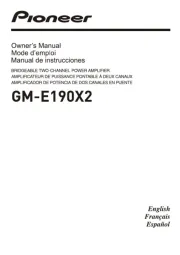
5 April 2025
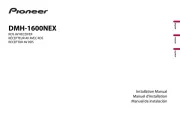
30 Maart 2025

3 Mei 2024

12 Juli 2023

4 Juli 2023

3 Juli 2023

11 Juni 2023

10 Juni 2023

6 Juni 2023

5 Juni 2023
Handleiding Receiver
- Astell&Kern
- Williams Sound
- Citronic
- Pure Acoustics
- Velleman
- Kanto
- Canyon
- Unison Research
- JVC
- Ram Audio
- A-NeuVideo
- AMS Neve
- Kopul
- Summit Audio
- SmartSystem
Nieuwste handleidingen voor Receiver
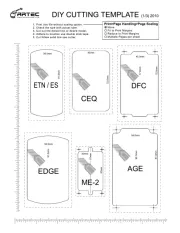
30 Juli 2025
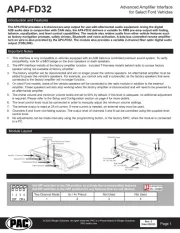
29 Juli 2025
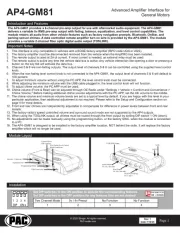
29 Juli 2025
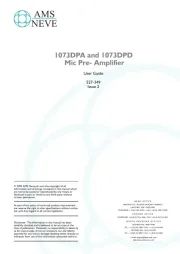
29 Juli 2025
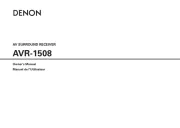
29 Juli 2025
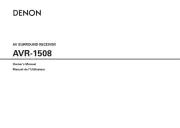
29 Juli 2025
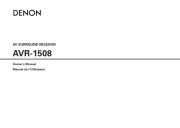
29 Juli 2025
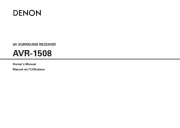
29 Juli 2025
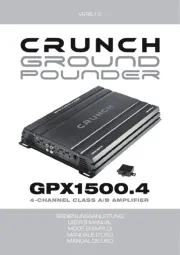
29 Juli 2025
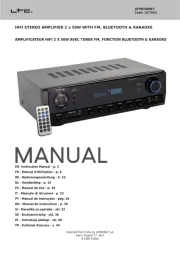
28 Juli 2025